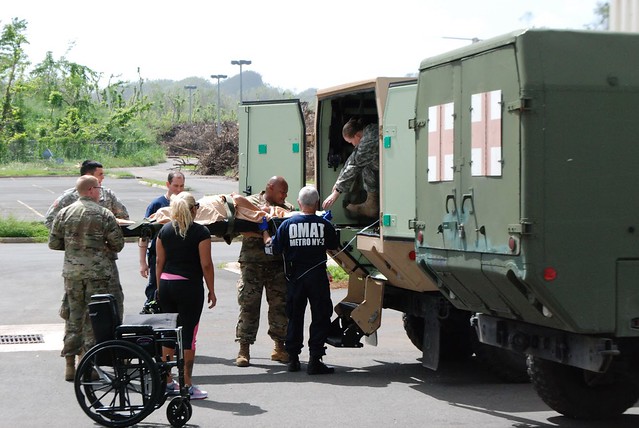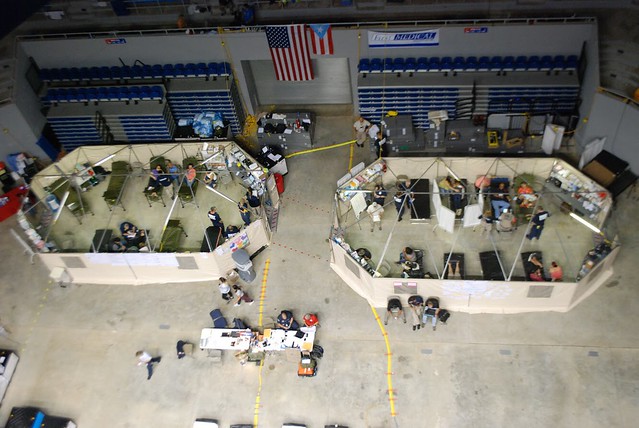Dedicated to Disaster Relief
Charles Jarmon has his bags packed for Hawaii, but he’s not headed to a luxury vacation on one of its beautiful islands.
Instead, he’s on standby to help if disaster relief is needed for the ongoing Kilauea volcano eruption, which has covered more than 6,100 acres with lava since early May, destroying more than 650 homes and forcing 2,500 people to evacuate.

Jarmon, an adjunct professor in the Master of Health Administration program and a paramedic with the federal National Disaster Medical System-DMAT (Disaster Medical Assistance Teams), is on call at least four times a year to deploy to areas, both in the U.S. and internationally, where a disaster has overwhelmed local medical resources.
Last October, Jarmon was among a regional team of almost 40 physicians, nurses, paramedics, respiratory therapists, and emergency medical technicians who landed in Puerto Rico about three weeks after Hurricane Maria.
“Arriving there was very humbling,” said Jarmon, who lives on Long Island and is an assistant vice president at Northwell Health. “You’re not only seeing the physical devastation — the homes that are destroyed, the roads that are torn up, the trees that are toppled, the lack of drinking water — but reality sets in about why we’re there and the magnitude of how much the healthcare infrastructure has been affected.”
The team was responsible for managing a 100-bed, generator-powered federal medical shelter in the town of Manati, an hour west of San Juan. Some days, they saw as many as 250 patients in a 24-hour period, treating everyone from the chronically ill who were ventilator-dependent to those who needed a prescription refill or whose blood pressure or asthma was becoming dangerously uncontrolled.
“You’re not only seeing the physical devastation — the homes that are destroyed, the roads that are torn up, the trees that are toppled, the lack of drinking water — but reality sets in about why we’re there and the magnitude of how much the healthcare infrastructure has been affected.”

“The people who came in were incredibly resilient given what they were facing, and in fact, they were the most appreciative patient base I have ever experienced,” said Jarmon, who worked 12-hour shifts in humid, 95-degree weather during the 16-day deployment. “No one ever complained if there was a wait time; they were just so thankful we were there, and they made it such a rewarding experience.”
Jarmon says he’s s always been driven to help people in situations where they might not be able to take care of themselves, beginning with his early days working as a paramedic while also attending graduate school. He knew the experience of treating patients would enhance his decision to pursue a career in health administration by giving him a deeper understanding of how the clinical and business sides of healthcare work together. It has also informed his work as a teacher.
“Emergency preparedness and disaster response activities are really critical elements that healthcare leaders need to understand,” he said. “It’s good to be able to share those real-world experiences with my students. I love teaching, and Hofstra was a logical fit for me because of its relationship with Northwell Health. It’s been a great opportunity to work with emerging healthcare leaders.”
Jarmon has been deployed a number of times, through both the federal DMAT team or employer initiatives, to help in disasters including the Sept. 11, 2001 attacks and Superstorm Sandy in 2012. The current volcano activity in Hawaii may not ultimately require a DMAT deployment, but there is speculation that the rest of the summer may bring another busy hurricane season. Jarmon has his bags ready.